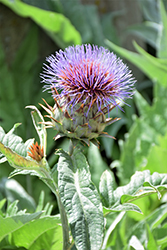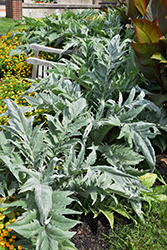Fri & Sat 8am - 8pm
Sun 8am - 7pm
Anytown, USA 12345
fax: 261.787.0463
e-mail: info@successgc.com


Plant Finder

Tenderheart Cardoon
Cynara cardunculus 'Tenderheart'
Height: 5 feet
Spacing: 3 feet
Sunlight:
![]()
Hardiness Zone: 7a
Other Names: Artichoke Thistle
Description:
Splendid arching silvery, spiny foliage is an architectural delight in the garden; careful when handling the spiny foliage; bold thistle-like flowers can be eaten like artichokes when unopened; leaf stalks edible if blanched
Edible Qualities
Tenderheart Cardoon is a perennial vegetable plant that is commonly grown for its edible qualities. The entire above-ground parts of the plant are edible, and are usually harvested from late summer to mid fall. The edible parts have a bitter taste.
The plant is most often used in the following ways:
- Eating When Cooked/Prepared
- Cooking
Planting & Growing
Tenderheart Cardoon will grow to be about 4 feet tall at maturity, with a spread of 4 feet. When planted in rows, individual plants should be spaced approximately 3 feet apart. It grows at a medium rate, and under ideal conditions can be expected to live for approximately 10 years. As an herbaceous perennial, this plant will usually die back to the crown each winter, and will regrow from the base each spring. Be careful not to disturb the crown in late winter when it may not be readily seen!
This plant is typically grown in a designated vegetable garden. It should only be grown in full sunlight. It does best in average to evenly moist conditions, but will not tolerate standing water. It is not particular as to soil type or pH. It is highly tolerant of urban pollution and will even thrive in inner city environments, and will benefit from being planted in a relatively sheltered location. This is a selected variety of a species not originally from North America.

